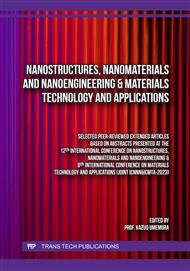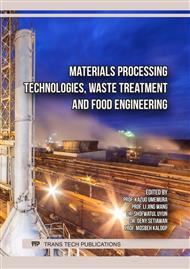p.11
p.25
p.35
p.41
p.47
p.55
p.61
p.67
p.73
Printability and Mechanical Properties of PLA/Iron Composites for FDM 3D Printing
Abstract:
Metal particle reinforcement plays an important role in the mechanical properties and printability of composite materials for FDM 3D-printing technology. PLA/Iron composite filament is widely used in many applications, such as magnetic and biomedical devices. This research aims to study the effect of iron particles on the printability and mechanical properties of PLA/Iron composite and compare it with another PLA composite of PLA/Stainless steel composite. The PLA/Iron (Fe) and PLA/Stainless steel (SS) composites were printed at different printing temperatures between 260-290 °C, printing speeds between 30-90 mm/s, and infill density of 100%. The max stress and elongation of printed PLA/Fe composite were higher than that of printed PLA/SS composite about 1.5 and 1.2 times. Moreover, the highest max stress of printed PLA/Fe composite specimens was 40.20 MPa at a printing temperature of 280 °C and printing speed of 60 mm/s. The optical microscope observed the homogeneous iron and stainless-steel particle distribution in PLA composite matrix and revealed the printed structure.
Info:
Periodical:
Pages:
47-51
Citation:
Online since:
March 2024
Authors:
Price:
Сopyright:
© 2024 Trans Tech Publications Ltd. All Rights Reserved
Share:
Citation:



